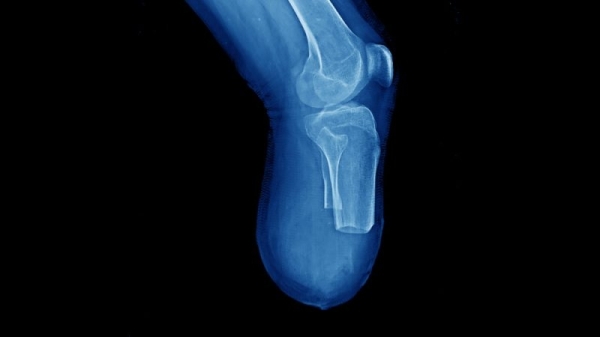Europe’s amputation crisis, diabetes experts call for urgent new screening programs

Europeans suffer 100,000 amputations a year because of the escalating issue of ‘diabetic foot’. Diabetes already burdens health systems, but without more frequent monitoring programmes, experts warn the amputation crisis will get worse.
Diabetics can develop foot ulcers, often leading to costly hospital admissions and amputations. Amputation rates across the EU are shockingly varied. In Europe, 1 in 11 adults has diabetes, that’s 61 million individuals. The region also has the highest number of children and adolescents with type 1 diabetes, with around 295,000 kids at constant risk.
Diabetes Mellitus is a prevalent metabolic disease, affecting 9.3% (463 million) of the global population in 2019, with projections indicating an increase to 11% (700 million) by 2045.
Diabetes predisposes patients to various complications, the most debilitating of which are lower extremity infections and amputations. The most common manifestation of lower extremity complications in diabetes is neuropathy, a significant risk factor for diabetic foot ulcers (DFUs).
With DFUs, a combination of sensory, motor, and autonomic neuropathy leads to loss of protective sensation, foot deformity, and skin changes, respectively. These changes result in callus formation, which can ulcerate due to repetitive trauma and inflammation.
Approximately 18.6 million people with diabetes worldwide develop a foot ulcer each year, and 34% of all people with either type 1 or 2 diabetes will develop a foot ulcer in their lifetime.
Losing the ‘gift of pain’
Euractiv asked Professor Andrew Boulton, President of the Worldwide Initiative for Diabetes Education, and a Professor of Medicine at, the University of Manchester, why society is so unaware of the devasting consequences many people suffer from diabetes.
Professor Boulton said: “The problem here is that symptoms of the late complications of diabetes are often silent until it is too late – so loss of vision may be the first sign of diabetic eye disease, end-stage renal failure may be the first sign of diabetic kidney disease.”
“A foot ulcer may be the first sign of nerve damage – with neuropathy, many patients have lost the ‘gift of pain’ which protects us from insensate injury. We only realize what a true gift pain is when we lose it.”
The prevalence of DFUs varies significantly in Europe, ranging from 1% in Denmark to a remarkable 17% in Belgium.
In a sign that the clinical situation is getting worse, according to Grand View Research, the European diabetic foot ulcer treatment market size was valued at $1.45 billion in 2021 and is expected to increase at a compound annual growth rate of 5.4% between 2022 and 2030.
Amputations in Europe
In a multicentric study based in Europe, it was found that 5% and 17% of patients with diabetic foot ulcers require major (above the ankle) and minor (below the ankle) amputation respectively, within 1 year of ulcer development.
A meta-analysis involving 16 studies revealed that the prevalence of lower limb amputation in patients with diabetic foot ulcers is around 19%.
Economic Implications
DFUs cause considerable global disability and are a major contributor to the global disability burden. The annual expenditure per person with diabetic foot complications is three times higher than that for diabetic patients without DFUs.
In 2017, it was estimated that the complications of diabetes in the United States carried a direct cost of $237 billion, with approximately 33% of this cost attributable to DFUs.
In a study of ‘Epidemiology and Risk Factors of Diabetic Foot Ulcer’ it was reported that “although the costs of DFU treatment were higher in developed and high-income countries such as the US ($10.9 billion/year), the UK ($4 billion/year) and Denmark ($150 million/year), the condition has also a profound impact on the economy of middle- and low-income countries.”
Cancer kills
Professor Boulton said: “Society takes cancer seriously because they know that cancer kills – so will have regular check-ups: similarly, heart disease is taken seriously as people know that heart disease kills – and will take a statin even though they feel no better.”
“However, diabetes is not taken seriously – ‘just a touch of sugar’ many say.”
“Societal education is needed to raise the profile of diabetes as a potentially preventable and eminently treatable condition,” said Boulton, adding, “If left untreated [diabetes] may have very serious outcomes. For example, we have shown that those on hemodialysis and have lost a toe, part of a foot or leg, have worse outcomes in terms of survival than most cancers.”
Generational policy shift is needed
The significant impact of DFUs now requires early identification and proper aggressive treatment of patients with diabetes and DFU to prevent its progression and reduce its economic burden.
Studies show that although the cost is great, low-cost, early implemented measures can go a long way in helping to decrease those costs. There is therefore an urgent need for preventative strategies to reduce the incidence of foot complications among those with diabetes.
The European Diabetes Forum (EUDF) argues that: “While the investment in upfront screening and risk-reduction campaigns might be significant, the case for the cost-effectiveness of prevention has been clearly demonstrated.”
The EUDF says early detection of Type 2 Diabetes (T2D) is also crucial to prevent severe complications like heart, kidney, and eye diseases. Screening supports timely intervention, reducing the personal and economic burden on individuals and healthcare systems.
Launching a “Diabetes Community Pledge for the European Parliament Elections 2024”, the EUDF has been asking candidates and political parties to pledge their support to a generational shift in fighting diabetes in Europe, and to act in the next mandate to create a strong EU diabetes policy.
[By Brian Maguire | Euractiv’s Advocacy Lab ]
Read more with Euractiv




